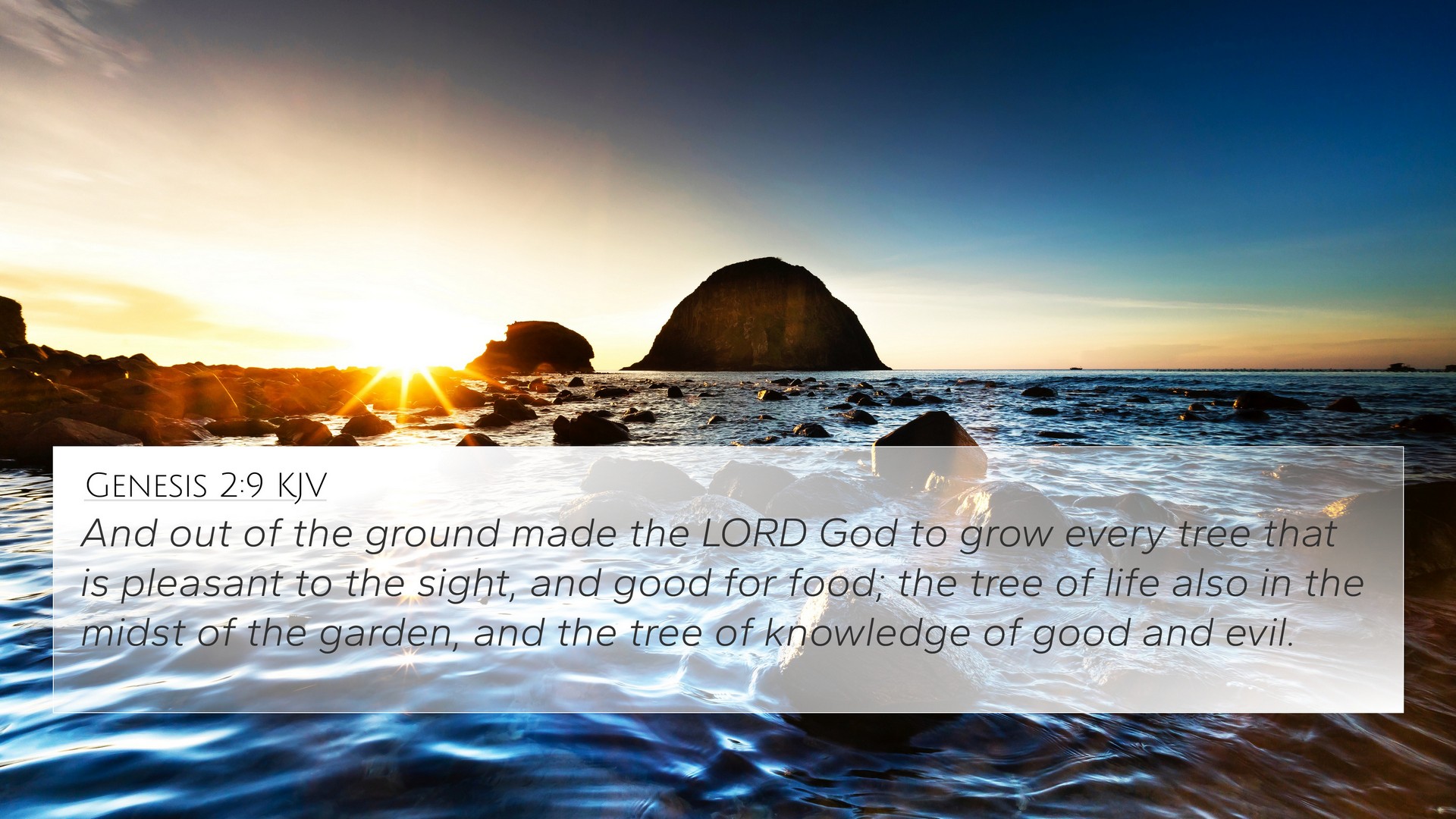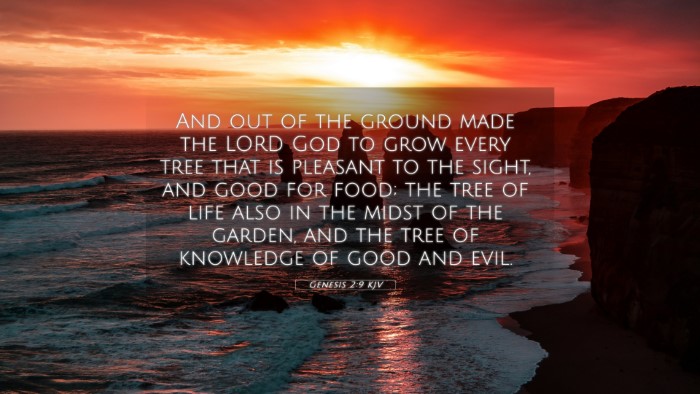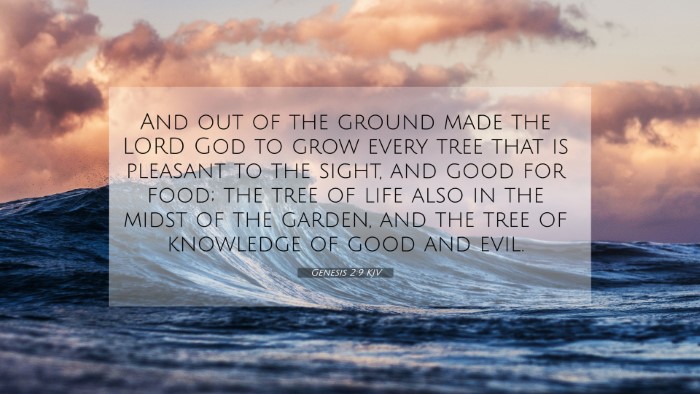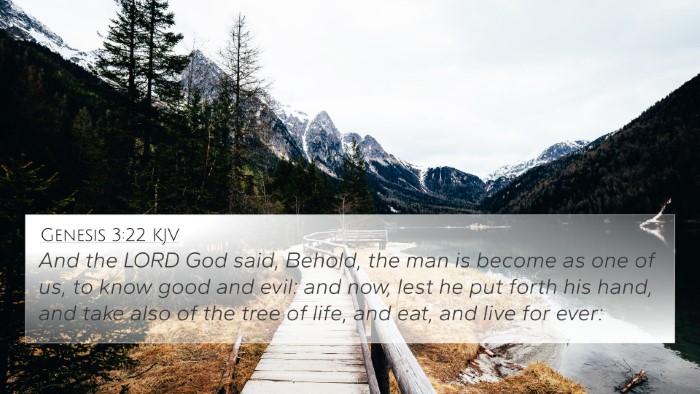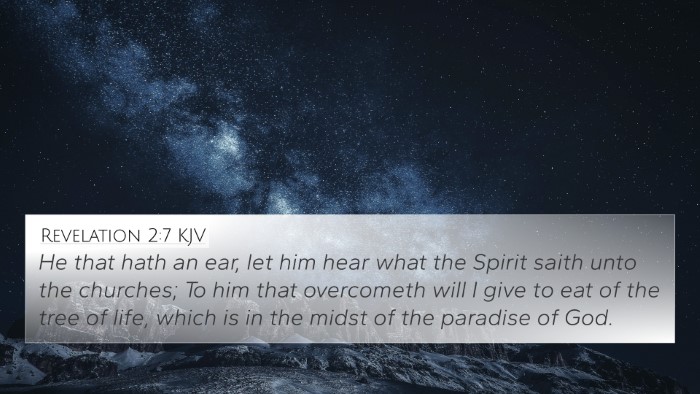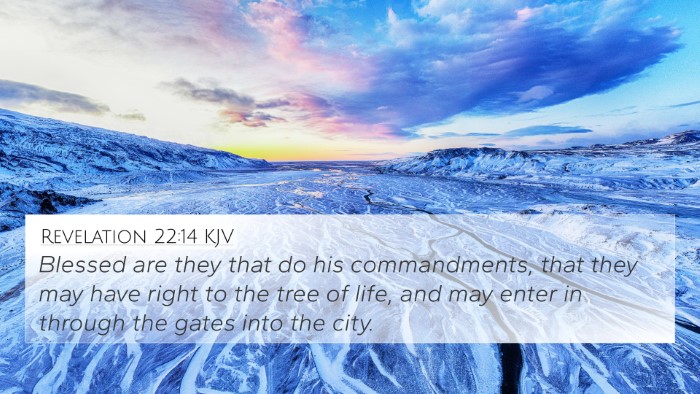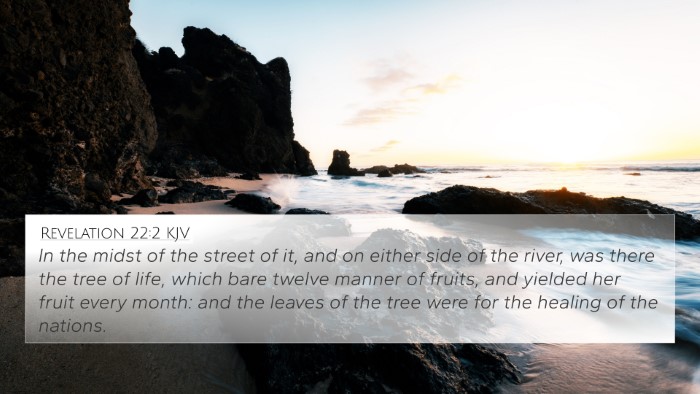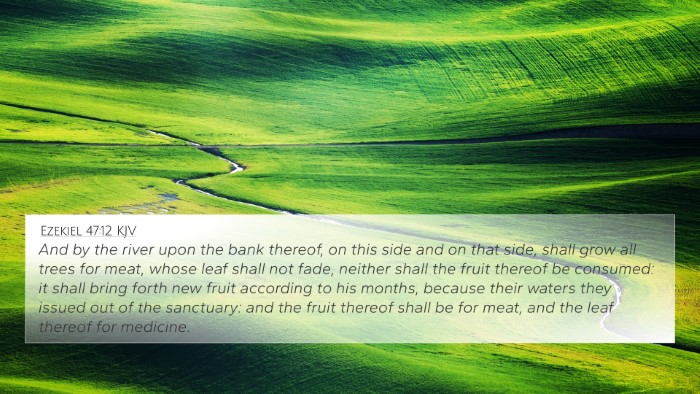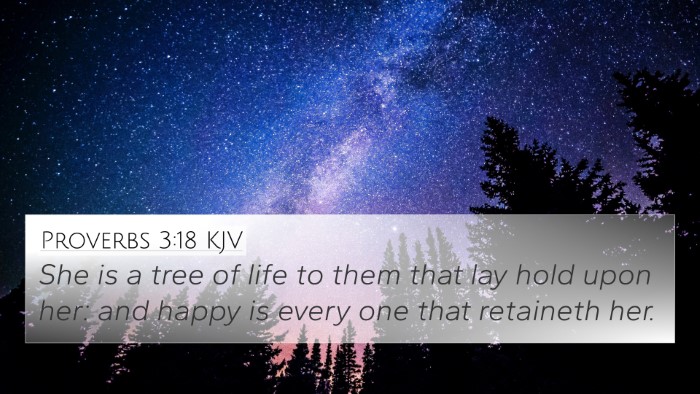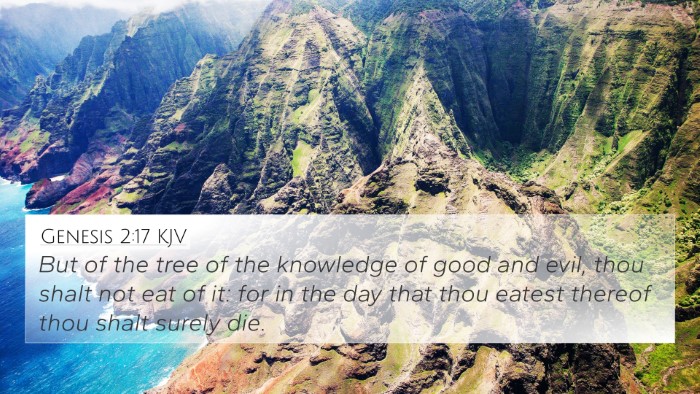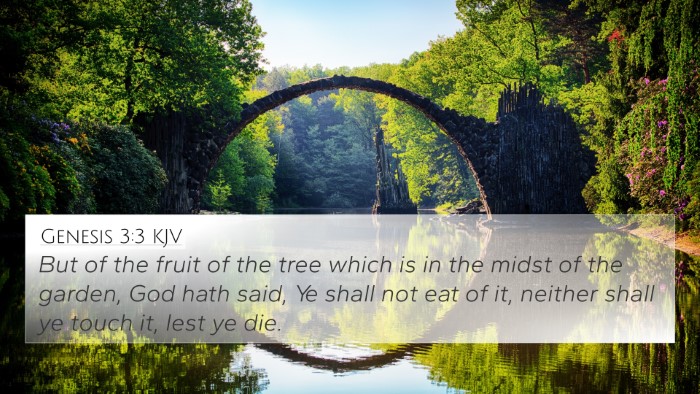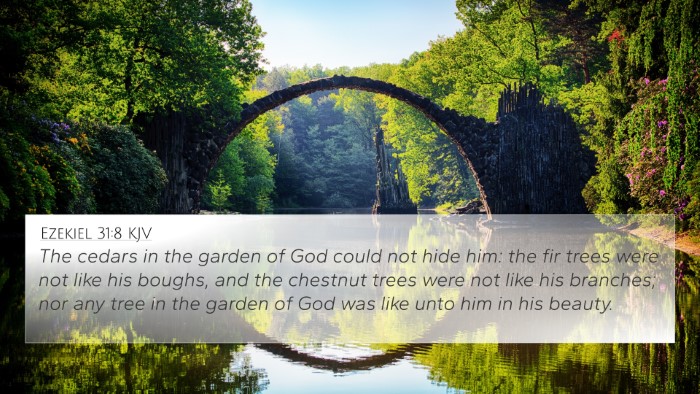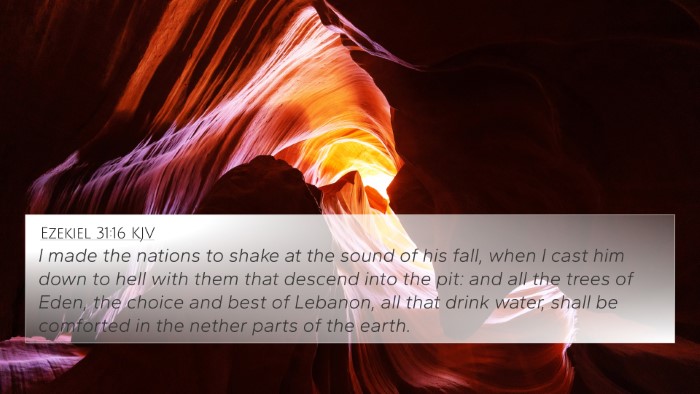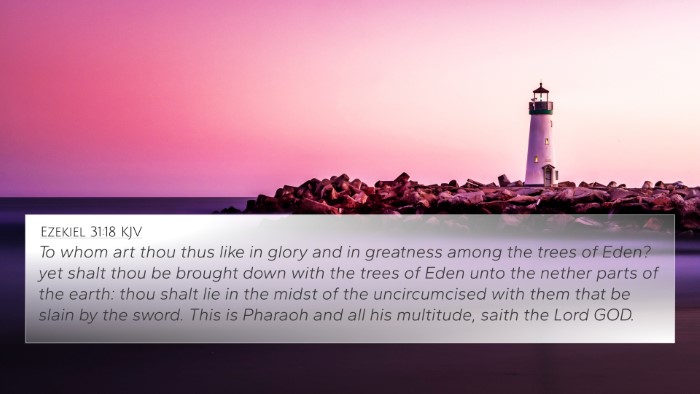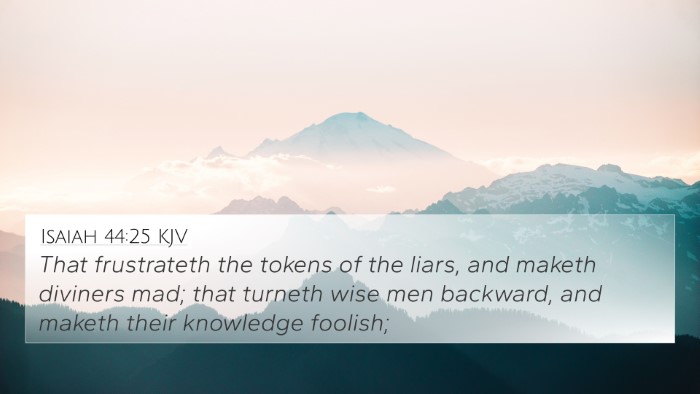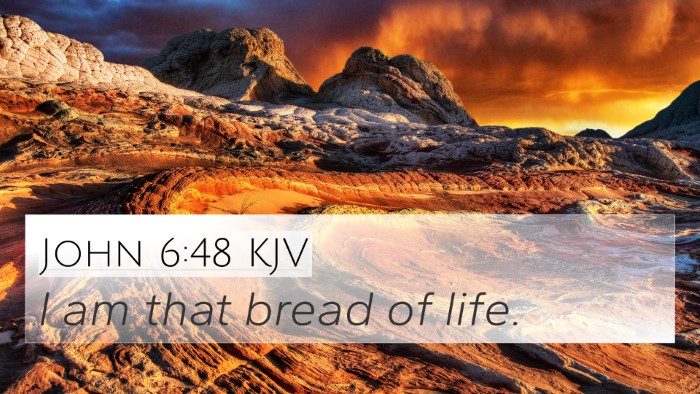Understanding Genesis 2:9
Verse: Genesis 2:9 states, "And out of the ground made the Lord God to grow every tree that is pleasant to the sight, and good for food; the tree of life also in the midst of the garden, and the tree of knowledge of good and evil."
Summary of Insights
This verse introduces several key elements in the creation narrative. It highlights the provision of God in creating a lush environment suitable for humanity. Importantly, it mentions two specific trees: the tree of life and the tree of the knowledge of good and evil, which hold significant theological implications.
The Significance of the Trees
- The Tree of Life: Represents eternal life and fellowship with God, emphasizing the divine intention for humanity's existence.
- The Tree of Knowledge of Good and Evil: Symbolizes the moral choice and the potential for disobedience, setting the stage for humanity's testing.
Theological Implications
According to public domain commentaries:
- Matthew Henry emphasizes that the trees were created for the benefit of humanity, signaling God's provision and desire for a relationship with His creation.
- Albert Barnes observes that the presence of these trees introduces moral accountability, urging humanity to exercise free will responsibly.
- Adam Clarke adds that the description of the trees as "pleasant to the sight" and "good for food" suggests both aesthetic beauty and sustenance, indicating God's abundance.
Connections to Other Scriptures
This verse has important Bible verse cross-references that reveal deeper meanings and connections within Scripture:
- Revelation 22:2: "In the midst of the street of it, and on either side of the river, was there the tree of life..." (Symbolizes eternal life in the New Jerusalem)
- Genesis 3:22: "And the Lord God said, 'Behold, the man is become as one of us, to know good and evil...'" (Follows the consequences of eating from the tree of knowledge)
- James 1:13: "Let no man say when he is tempted, I am tempted of God; for God cannot be tempted with evil..." (Relates to the moral choices emphasized in Genesis)
- Proverbs 3:18: "She is a tree of life to them that lay hold upon her..." (Illustrates wisdom as a tree of life concept)
- John 10:10: "I am come that they might have life, and that they might have it more abundantly..." (Connects to God's intention for abundant life)
- Matthew 4:3-4: "But he answered and said, It is written, Man shall not live by bread alone..." (Reinforces reliance on God beyond physical sustenance)
- Romans 5:12: "Wherefore, as by one man sin entered into the world..." (Introduces the concept of sin through the choice made in relation to the trees)
Exploring Thematic Connections
Thematically, Genesis 2:9 serves as a foundation for discussions about Bible verses that relate to each other, demonstrating how creation, free will, and divine provision interlink within the narrative of Scripture.
Cross-Referencing and Comparative Analysis
Utilizing tools for Bible cross-referencing can help deepen your understanding:
- Using a Bible concordance allows for easy navigation between related themes.
- A Bible cross-reference guide can provide insight into how various scriptures illuminate one another.
- Cross-reference Bible study methods include thematic studies examining how concepts evolve from Genesis to Revelation.
Practical Application
For those studying Genesis 2:9, consider how the principles of choice and divine provision apply to your life today. Reflect on the interconnectedness of the Scriptures and seek out comprehensive Bible cross-reference materials that facilitate deeper understanding.
Final Thoughts
In conclusion, Genesis 2:9 is not just a piece of text but a doorway into the complexities of divine creation, moral responsibility, and the ongoing dialogue between humanity and God throughout Scripture.
